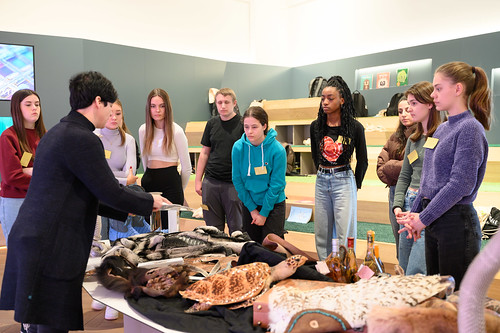WILDLIFE CRIME
Discovering and uncovering: Detective work in the name of species protection
In recent years, wildlife crime has become the focus of public attention as well as political agendas. The illegal trade in wild animals and plants is the subject of organized crime worldwide and poses a significant existential threat to many endangered animal and plant species. Illegal activities range from the trade in protected wildlife, hunting trophies, fashion items and works of art to the marketing and processing of plant and animal parts of endangered species for human consumption or traditional medicine. Since 1975, international trade in 36,000 endangered species of wildlife and plants has been regulated by the Washington Convention on International Trade in Endangered Species (CITES). In order to punish violations of the law and to counteract organized crime, a wide variety of specialists and research groups are required.
The project team of the Natural History Museum Vienna (NHMW) would like to sensitize high schoolers to the topic of "illegal wildlife trade" and its importance for international species protection. The participants are actively involved in research processes and work out the scope, background and effects of the illegal wildlife trade using case studies. Through the participation of (inter)national research groups and cooperation partners, the school groups gain insights into the world of international wildlife trade and species protection. For this purpose, the United Nations Office on Drugs and Crime (UNODC), the Austrian customs office and the Vienna Open Lab will be visited, as well as virtual meetings with the Snake Farm of the Queen Saovabha Memorial Institute Bangkok and the Crocodile Specialist Group of the International Union for Conservation of Nature (IUCN). In addition, the school groups are commissioned to conduct research in their own environment. The project inputs and outputs in the form of an exchange of information and opinions, lectures, brochures, publications and blogs should ultimately create added value for everyone involved and draw attention to the topic. The active participation in the process and the interdisciplinarity are intended to counteract reservations, promote dialogue and enable bridging between science, society, (non-) university research and school teaching practice across national borders.
This project is already completed.
Final Report
Publikation
-
Marietta Hengl, Karin Ernst, Peter Sziemer, Stefan Agnezy, Martin Kapun, Silke Schweiger: Detektivarbeit im Namen des Artenschutzes (Opens in new window)2025-01-20, OIS zam: Forum 2024 der Ludwig Boltzmann Gesellschaft Salzburg
-
Schmid B, Schweiger S, Grömer K, Ott I, Vohland K: Citizen Science im Naturhistorischen Museum Wien – eine jahrhundertelange Erfolgsgeschichte (Opens in new window)2023-12-01, Spurensuche. Populäres Wissen. Von der Laienforschung des 19. Jahrhunderts zur heutigen »Citizen Science« – eine Annäherung.Jg. 2021/22, 30./31.
 Schools
Schools
 Partners from Economy and Society
Partners from Economy and Society
 Scientific institutions
Scientific institutions












